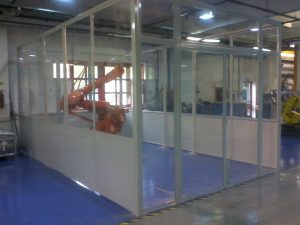Warehouse automation has become increasingly prevalent across the UK as companies seek to improve efficiency, reduce costs, and overcome workforce challenges.
From robotic picking systems to automated guided vehicles (AGVs), modern technology is reshaping how warehouses operate. However, with these advancements come new considerations, particularly when it comes to workplace safety.
As automation continues to evolve, so too must the safety protocols that govern warehouse operations.
Traditional safety guidelines were largely designed for human workers, but now must account for the complexities of man-machine interaction, software-driven systems, and real-time data environments. This blog explores how automation is influencing safety protocols in today’s warehouses, examining both the benefits and the new risks it brings.
The Rise of Warehouse Automation
Warehouse automation encompasses a broad range of technologies designed to perform tasks previously carried out by human workers. These include conveyor belts, autonomous mobile robots (AMRS), robotic arms for picking and packing, and warehouse management systems (WMS) that coordinate inventory movements.
As these technologies become more affordable and accessible, businesses across the UK are increasingly adopting them to boost productivity.
Recent data shows a sharp rise in warehouse automation adoption, particularly in the e-commerce and logistics sectors.
The demand for faster fulfilment, 24/7 operations, and error-free deliveries is driving the shift. While automation offers clear efficiency gains, it also introduces the need for updated safety practices that reflect the new working environment.

Changes to Traditional Safety Protocols
Traditional warehouse safety protocols were designed with manual processes in mind—think forklift safety, manual lifting procedures, and pedestrian walkway segregation. However, with automation in place, many of these protocols become outdated or irrelevant.
For instance, AGVs follow pre-programmed routes and may not respond to hazards in the same way a human would, requiring new safety zoning and monitoring systems.
Risk assessments must be re-evaluated to reflect these changes. Processes that once relied on human decision-making now depend on algorithms and sensors, meaning any system failure can pose serious risks.
Protocols must now include software maintenance schedules, sensor calibration routines, and emergency override procedures, all of which play a crucial role in maintaining a safe environment.
Enhanced Safety Through Automation
One of the most significant benefits of automation is its ability to reduce human error—often the leading cause of accidents in warehouse settings.
Machines do not tire, get distracted, or take shortcuts, which means they can help create more consistent and reliable operations.
Automated systems can also handle hazardous tasks such as lifting heavy loads, operating at height, or working in extreme temperatures, reducing the physical risk to employees.
Furthermore, many automated systems are equipped with built-in safety features such as proximity sensors, automatic shutdown mechanisms, and collision avoidance technology.
These features allow for quicker response times to potential hazards and enable real-time monitoring of the working environment. With the right setup, automation can significantly enhance the overall safety of a warehouse.
New Risks Introduced by Automation
While automation can improve safety, it also introduces new risks that must be managed. Technical failures such as software bugs, sensor malfunctions, or loss of connectivity can lead to accidents if not addressed swiftly.
For example, a misfiring robotic arm or an AGV veering off course can pose serious dangers if humans are working nearby.
There is also a growing risk associated with human-machine interaction. Staff must learn to operate safely alongside automated equipment, and a lack of training or awareness can lead to injury.
In addition, warehouses that rely on connected systems are vulnerable to cyberattacks, which could disrupt operations and compromise safety-critical processes if left unprotected.
Training and Protocol Adaptation
As automation becomes more widespread, staff training must evolve to meet the demands of a changing workplace. Employees need to understand not only how to use the technology but also how to remain safe around it.
Training programmes should cover new protocols, emergency response procedures, and an understanding of how the machines operate, including their limitations.
Standard operating procedures (SOPS) must also be updated to reflect the realities of an automated workflow.
For example, there may be new rules for entering automated zones, restarting machinery, or reporting faults. A real-world example can be seen in distribution centres that introduce AGVS and must re-train staff to navigate the warehouse safely without interrupting automated paths.
Designing Warehouses with Automation Safety in Mind
Modern warehouses should be designed with automation at the forefront of safety planning. Layouts must consider the flow of both machines and people, with clearly marked zones, dedicated safety barriers, and emergency stop systems easily accessible.
The positioning of sensors and the placement of equipment must also take into account visibility, maintenance access, and interaction with other systems.
Collaborative robots (or ‘cobots’) are becoming increasingly common and require a different approach to safety.
Unlike traditional robots, which operate in isolated zones, cobots are designed to work alongside humans, meaning safety must be built into their programming, including force-limiting controls and responsive stop mechanisms.
Working with safety consultants and engineers during the planning stages can prevent many hazards before they arise.

Regulatory Compliance and Future Outlook
UK health and safety regulations are evolving to keep pace with automation, but there is still a level of ambiguity in some areas. Businesses must ensure they are compliant not only with existing Health and Safety Executive (HSE) guidance but also with broader obligations such as cyber risk management and data protection.
Staying informed on regulatory changes is key to maintaining compliance.
Looking to the future, automation in warehouses is only expected to grow. With AI-driven systems, real-time analytics, and fully autonomous warehouses on the horizon, businesses must stay agile in adapting their safety practices.
By investing in continual training, robust maintenance, and future-proof safety systems, companies can protect both their workers and their operational integrity.
Conclusion
Automation presents an exciting opportunity to improve warehouse efficiency, accuracy, and productivity.
However, it also introduces new safety considerations that must not be overlooked.
Businesses that adopt automation need to re-examine their safety protocols, risk assessments, and employee training programmes to reflect these changes.
By striking the right balance between innovation and precaution, warehouses can harness the full potential of automation without compromising on safety.
Proactive planning, regular audits, and a culture of continuous improvement will ensure that safety evolves alongside technology.
If your warehouse is embracing automation, now is the time to review your protocols and future-proof your safety measures.
